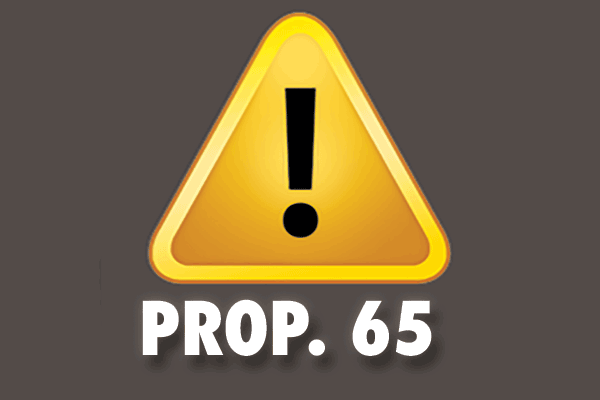 A coalition led by the California Chamber of Commerce continues to highlight “unclear and ambiguous” sections of draft changes to the state’s Proposition 65 warning regulations.
A coalition led by the California Chamber of Commerce continues to highlight “unclear and ambiguous” sections of draft changes to the state’s Proposition 65 warning regulations.
In response to coalition concerns, the state Office of Environmental Health Hazard Assessment (OEHHA) modified some parts of the latest draft requirements, dated May 20, 2016.
But the May draft still contains problematic provisions that could spawn unnecessary litigation and confusion for businesses seeking to comply and will substantially change the way in which they provide the warnings required by Proposition 65.
The coalition includes more than 200 California-based and national organizations and businesses that collectively represent nearly every major business sector on which OEHHA’s Proposition 65 warning proposal would have a direct impact.
The coalition has been working with OEHHA over nearly three years now. The deadline for OEHHA to finalize the rule is November 27, 2016.
CalChamber will continue to take the lead role on this regulatory proposal moving forward.
June Comments
Due to the late stage of the regulatory process, the CalChamber and coalition focused their 10-page comment letter sent on June 6, 2016 to issues that must be addressed now. Where applicable, the letter proposed new regulatory language that would resolve coalition concerns. Suggestions included:
• Clarifying that, after the date of adoption of the regulations but prior to the two-year effective date, businesses are permitted to provide warnings using the old safe harbor content, the newly adopted content or alternative warnings that comply with the new regulations.
• Better defining what the regulation means when stating that a warning is to name “one or more” of listed chemicals in the consumer product or area affected by the warning being provided.
• Explaining what types of methods are appropriate for providing warnings via electronic devices.
• Clarifying that the required “on product” warning need not appear on the product itself but instead can appear on exterior packaging.
• Stating that the precise verbiage of translated warnings are subject to liberal construction and a “rule of reason” to reduce the likelihood that private enforcers will pursue frivolous translation lawsuits.
• Spelling out what the regulation means when requiring businesses to specify the name of “one or more sources of exposure” in warnings.
• Clarifying that OEHHA does not intend the regulations to conflict with existing federal law establishing clear boundaries for private enforcement of Proposition 65 occupational exposure warnings.
Ongoing Concerns
The CalChamber and coalition note that the May version of OEHHA’s proposed warning regulations still will lead to the following problems outlined in the April 26, 2016 coalition letter:
• Substantially increase litigation by creating a new breed of “bad warning” litigation that does not exist today, wherein despite using the precise “safe harbor” warning content provided by OEHHA, businesses would nonetheless be challenged for failing to provide an adequate warning;
• Impose an unworkable, extraordinarily costly and elevated requirement on those providing warnings for environmental exposures;
• Require, for the first time since Proposition 65’s passage in 1986, two warnings for one product; and
• Eliminate the long-accepted method of transmitting warnings via owners’ manuals, which typically contain the most significant safety information for many products.
Modifications
In response to the coalition’s April 26 comments, OEHHA has addressed provisions that would have:
• Flipped the existing statutory burden on businesses by requiring them to affirmatively demonstrate that a warning is required;
• Infringed on businesses’ constitutionally protected commercial speech and due process rights.

